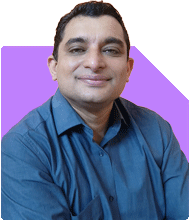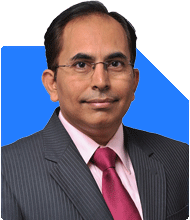Ramalingam Kalirajan |10902 Answers |Ask -Follow
Mutual Funds, Financial Planning Expert - Answered on Jul 10, 2024
He has an MBA in finance from the University of Madras and is a certified financial planner.
He is the director and chief financial planner at Holistic Investment, a Chennai-based firm that offers financial planning and wealth management advice.... more

Hello, I'm 47 years old. Investing in SIP for last few years. 1.In cases,you have advised to switch funds in case of weak performance. Just wanted to know,how to switch. Say I'm with SBI blue chip fund but want to swith some other better performing large cap fund . Shall I stop SIP with SBI and start with others . Is that all ? If yes, what to do with accumulated fund with SBI. Redeem or not ? Kindly explain. 2. How to choose CFP ? I mean, need to check credential before putting all ur faith over a person for the future . Kindly elaborate.
How to Switch Funds
Evaluating Current Fund Performance
First, you need to assess your current fund's performance. Check if the SBI Blue Chip Fund is consistently underperforming its benchmark and peers. Look at its returns over different periods and compare it with other large-cap funds.
Decision to Switch
If you decide to switch, the process involves stopping the SIP in the current fund and starting it in a better-performing fund. Here's how you can do it:
Stop SIP in Current Fund: Log into your mutual fund account or through the platform you use. Find the option to stop the SIP in the SBI Blue Chip Fund. This will halt future investments.
Start SIP in New Fund: Choose a new large-cap fund with a good track record. Set up a new SIP with the desired amount and tenure. Ensure it aligns with your financial goals and risk tolerance.
Managing Accumulated Funds
Now, you have to decide what to do with the accumulated funds in the SBI Blue Chip Fund.
Hold or Redeem: You can either hold the accumulated units or redeem them. Holding means you continue to benefit from any future growth. Redeeming allows you to reinvest in the new fund.
Reinvesting Redeemed Amount: If you choose to redeem, consider reinvesting the amount in the new large-cap fund. This can provide better returns if the new fund performs well.
Choosing a Certified Financial Planner (CFP)
Importance of a CFP
A CFP is crucial for personalized financial planning. They provide advice tailored to your financial situation, goals, and risk appetite. Choosing the right CFP is essential for your financial well-being.
Checking Credentials
When selecting a CFP, checking their credentials is vital. Here's how you can do it:
Certification Verification: Ensure the planner has the CFP certification from a recognized body. You can verify their certification online through official CFP websites.
Experience and Expertise: Look for a planner with substantial experience. Their expertise in handling various financial situations will be beneficial.
Client Testimonials and Reviews: Check for client testimonials and reviews. This gives insight into their service quality and client satisfaction.
Google Reviews: Google reviews can provide additional perspectives on the CFP's services. Look for consistent positive feedback.
Initial Complimentary Call: Have an initial complimentary call with the CFP. This helps you understand their approach and see if you're comfortable working with them.
Speak to Existing Customers: Speak to one of their existing customers. This helps you gauge if the CFP is trustworthy and reliable.
Questions to Ask
Before finalizing a CFP, ask these questions:
Fee Structure: Understand their fee structure. Ensure it's transparent and fits your budget.
Services Offered: Inquire about the services they offer. Ensure they cover all areas of financial planning relevant to you.
Investment Philosophy: Ask about their investment philosophy. Ensure it aligns with your financial goals and risk tolerance.
It's great that you are proactive about your investments. Switching funds and choosing a good CFP shows your commitment to financial growth. Understanding these processes can seem overwhelming, but you're on the right track. Your efforts will pay off in the long run.
Advantages of Mutual Funds
Diversification
Mutual funds provide diversification by pooling money from many investors to invest in a variety of assets. This reduces risk by spreading investments across different securities.
Professional Management
Mutual funds are managed by professional fund managers who have the expertise to make informed investment decisions. This professional management can potentially lead to better returns.
Liquidity
Mutual funds offer high liquidity. You can buy and sell mutual fund units easily, providing quick access to your money when needed.
Convenience
Investing in mutual funds is convenient. With SIPs, you can invest a fixed amount regularly without worrying about market timing. This disciplined approach can lead to wealth accumulation over time.
Power of Compounding
The power of compounding in mutual funds can significantly grow your investment. Reinvesting your returns allows your money to earn returns on returns, leading to exponential growth over time.
Risk and Considerations
Market Risk
Mutual funds are subject to market risk. The value of investments can go up or down based on market conditions. Understanding your risk tolerance is essential.
Expense Ratios
Mutual funds come with expense ratios, which are fees charged for managing the fund. Higher expense ratios can impact your returns. Compare expense ratios while choosing funds.
Performance Variability
Not all mutual funds perform consistently. It's essential to review fund performance regularly and make necessary adjustments to your portfolio.
Final Insights
Switching funds and choosing a CFP requires careful consideration and planning. By evaluating fund performance and making informed decisions, you can optimize your investments. Choosing a CFP with the right credentials and expertise ensures you receive personalized financial guidance.
Remember, the goal is to align your investments with your financial goals and risk tolerance. Stay informed, review your investments regularly, and seek professional advice when needed.
Best Regards,
K. Ramalingam, MBA, CFP
Chief Financial Planner
www.holisticinvestment.in
You may like to see similar questions and answers below
Omkeshwar Singh | Answer |Ask -Follow
Head, Rank MF - Answered on Jan 04, 2021
Ramalingam Kalirajan |10902 Answers |Ask -Follow
Mutual Funds, Financial Planning Expert - Answered on May 06, 2024
Ramalingam Kalirajan |10902 Answers |Ask -Follow
Mutual Funds, Financial Planning Expert - Answered on Jun 26, 2024
Ramalingam Kalirajan |10902 Answers |Ask -Follow
Mutual Funds, Financial Planning Expert - Answered on Dec 28, 2024
Naveenn Kummar |235 Answers |Ask -Follow
Financial Planner, MF, Insurance Expert - Answered on Sep 04, 2025
Anu Krishna |1749 Answers |Ask -Follow
Relationships Expert, Mind Coach - Answered on Dec 17, 2025
Anu Krishna |1749 Answers |Ask -Follow
Relationships Expert, Mind Coach - Answered on Dec 17, 2025
Radheshyam Zanwar |6748 Answers |Ask -Follow
MHT-CET, IIT-JEE, NEET-UG Expert - Answered on Dec 17, 2025
Anu Krishna |1749 Answers |Ask -Follow
Relationships Expert, Mind Coach - Answered on Dec 17, 2025
Dr Shakeeb Ahmed Khan |184 Answers |Ask -Follow
Physiotherapist - Answered on Dec 17, 2025
T S Khurana |538 Answers |Ask -Follow
Tax Expert - Answered on Dec 17, 2025
T S Khurana |538 Answers |Ask -Follow
Tax Expert - Answered on Dec 17, 2025
Janak Patel |72 Answers |Ask -Follow
MF, PF Expert - Answered on Dec 17, 2025
Ramalingam Kalirajan |10902 Answers |Ask -Follow
Mutual Funds, Financial Planning Expert - Answered on Dec 17, 2025
Samraat Jadhav |2511 Answers |Ask -Follow
Stock Market Expert - Answered on Dec 17, 2025





























